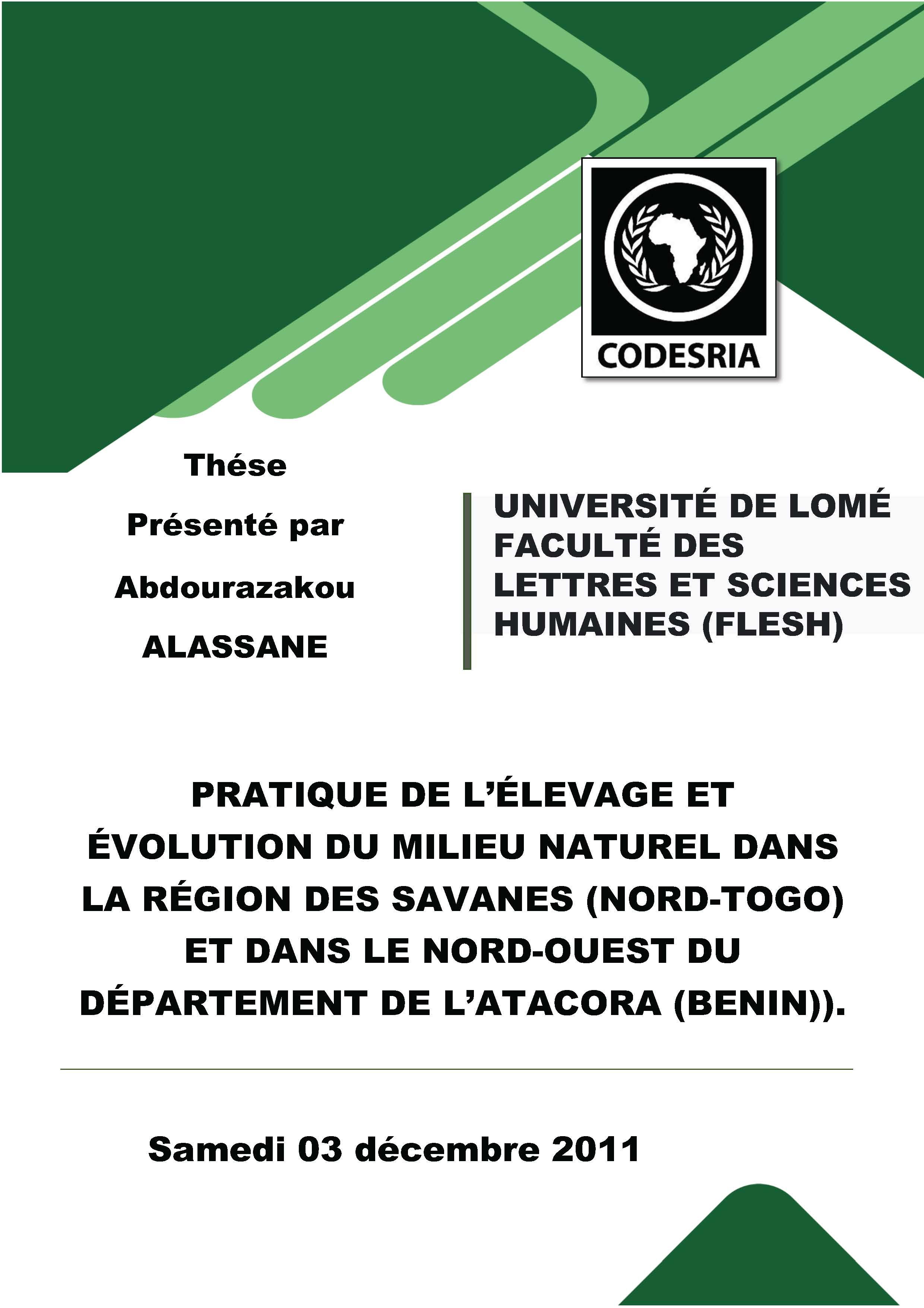PRATIQUE DE L’ÉLEVAGE ET ÉVOLUTION DU MILIEU NATUREL DANS LA RÉGION DES SAVANES (NORD-TOGO) ET DANS LE NORD-OUEST DU DÉPARTEMENT DE L’ATACORA (BENIN)).
Mots-clés :
Zootechnie, pâturage, systèmes pastorauxSynopsis
The Savannah Region (Togo) is located between 0 ° and 1° longitude East and between 10° and 11° North while the Department of the Atacora (Benin) is located between 10° and 11° 25 North latitude and between 1° and 3° 10 East longitude. These two locations are areas, in the savanna, belong to the Sudanese type of climate. The study area spreads across two countries, Benin and Togo, and is limited in the North by the republics of Burkina Faso and Niger; in the North-East by the Department of Alibori (Benin); in the Southeast by the Department of Borgou (Benin); in the South by the Department of Donga (Benin) and the Kara Region (Togo); and in the West by the Republic of Ghana. 88% of the populations in the Savannah Region (Togo) are farmers against 86.5% in the Department of the Atacora (Benin). In the study area, cattle farming occupy a prominent position, both socially and economically. The Savannah Region in Togo comes top in the business of cattle farming with bovines occupying 43.2% (NAS, 2009) while the Department of the Atacora in Benin comes second in cattle farming as it concentrates almost
24% of the cattle in Benin (MDR, 1994). Through their geographical position, these areas are gateways for Sahelian migrant cattle farmers moving towards the coast in search of grazing space and water spots. That almost permanent arrival of migrant cattle farmers since the climate crisis of the 70s and especially that of the 80s adds pressure on natural the resources of the study area. In addition to all these; there are also the harsh climatic conditions. This situation raises a question: ‘What can be
the state of the plant cover and the natural environment?’ Our work is an attempt at answering the forgoing question. The methodology adopted to conduct the literature review involves the analysis of the map of land use in 1975 and 2000, the socio-economic and ethno-botanical surveys as well as the inventory of the flora. Phytosociological surveys were conducted following the method of Braun-Blanquet (1932) in rectangular plots. A total of 121 plots were made and 256 of both woody and herbaceous species, belonging to 139 genera grouped into 43 families, were surveyed. The analysis of the maps of land use between 1975 and 2000 showed that the vegetation experienced a decline of about 79.88% in 25 years across the study area. Factors involved in the degradation of natural formations are of climatic, edaphic, and human natures. Of these, anthropogenic factors appear to be the most critical in agriculture in general, and especially in animal farming. Many tree species are used mainly during the dry season to feed livestock, the main ones include Afzelia africana, Khaya senegalensis, Pterocarpus erinaceus, Daniellia oliveri. Herbaceous species on the other hand, are also used in house roofing. Because of its importance in land use, cattle farming plays a crucial role in the natural environment. This dynamics of pastures is analyzed from various angles, both positive (new species) and negative (loss of highly valued species, proliferation of abandoned species, siltation of rivers, creation of denudation beaches in the corridors of transhumance), human and animal health. The arrival of these migrant cattlemen from the Sahel into the area creates new relationships with the local people. It is also responsible for the increase in conflicts between Sahelian cattlemen on the one hand and local farmers and pastoralists on the other hand.
Téléchargements






